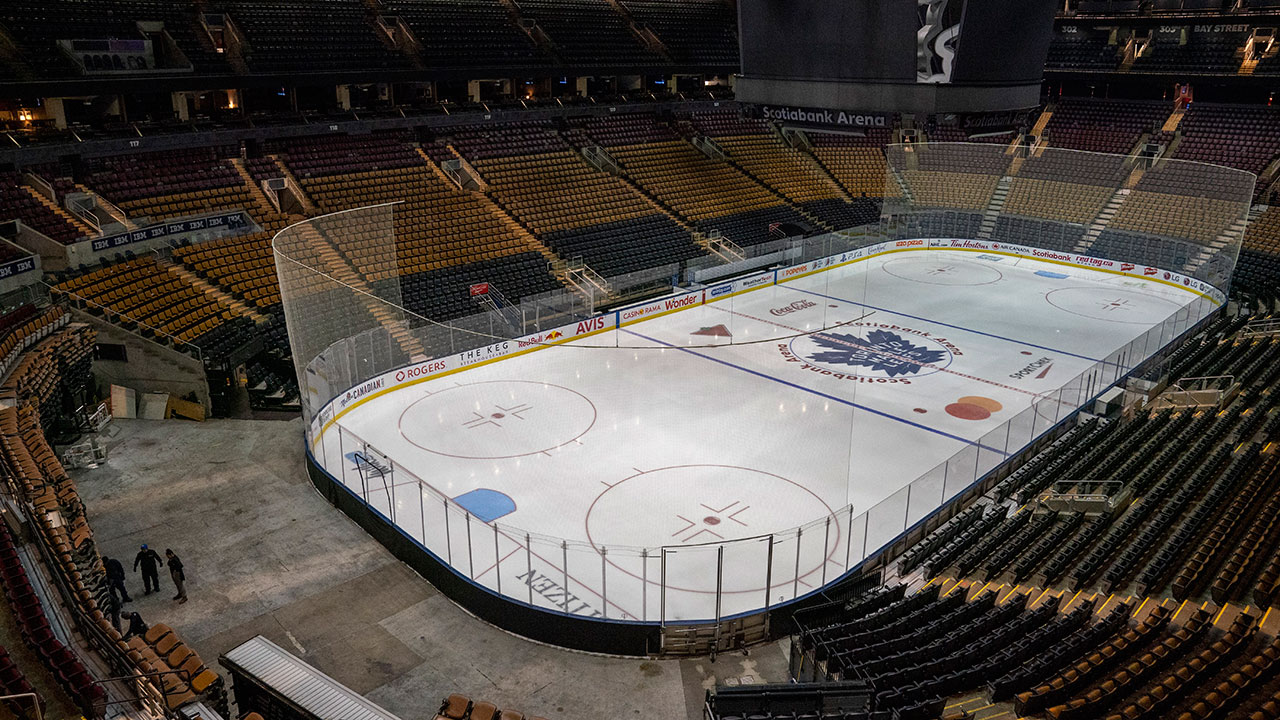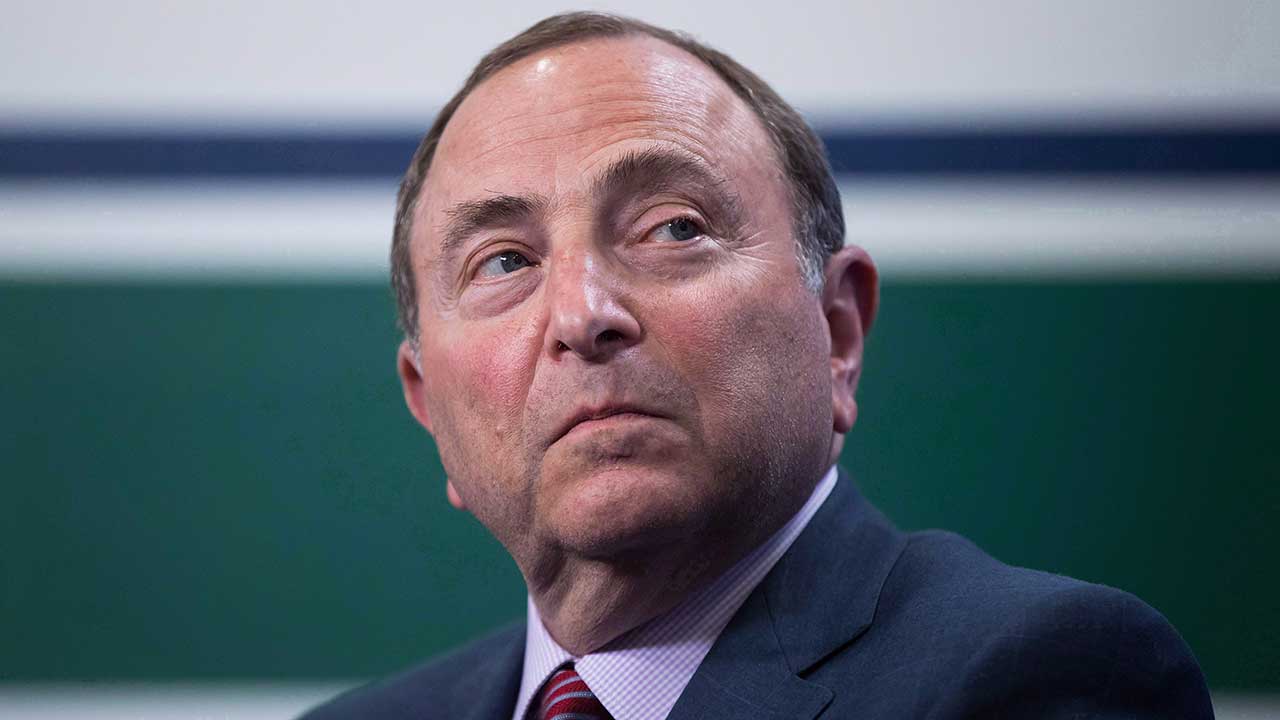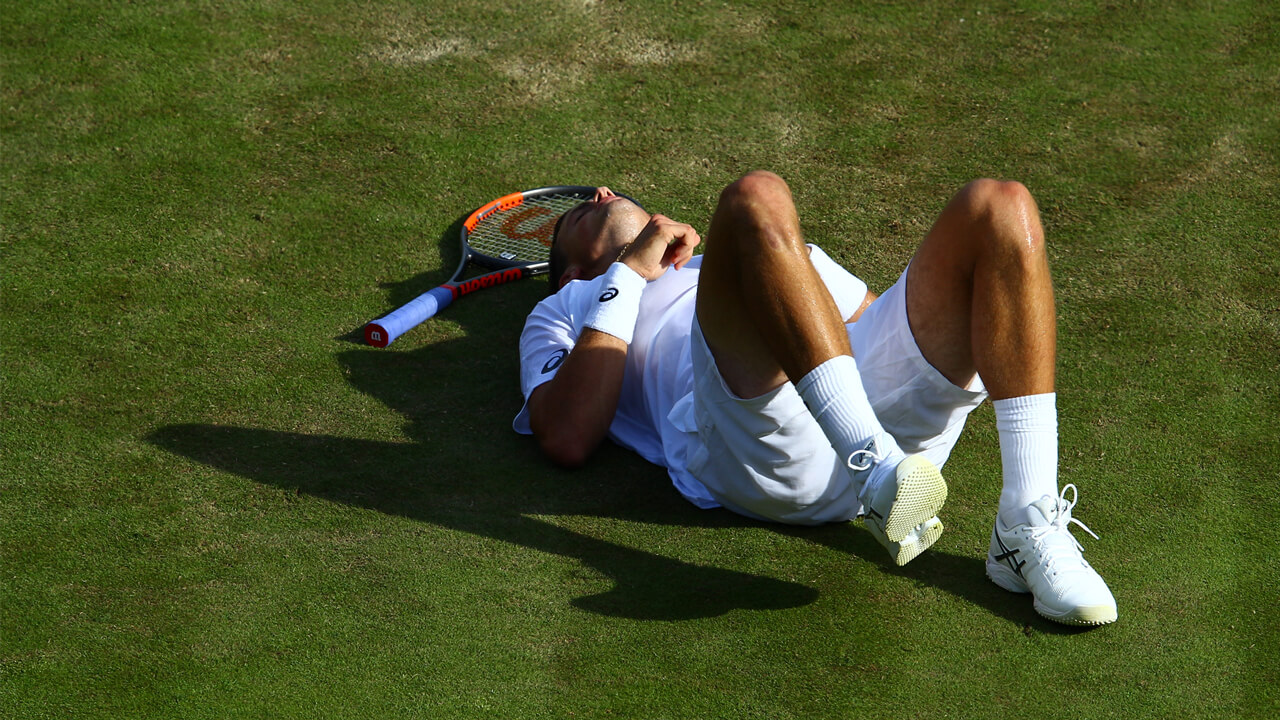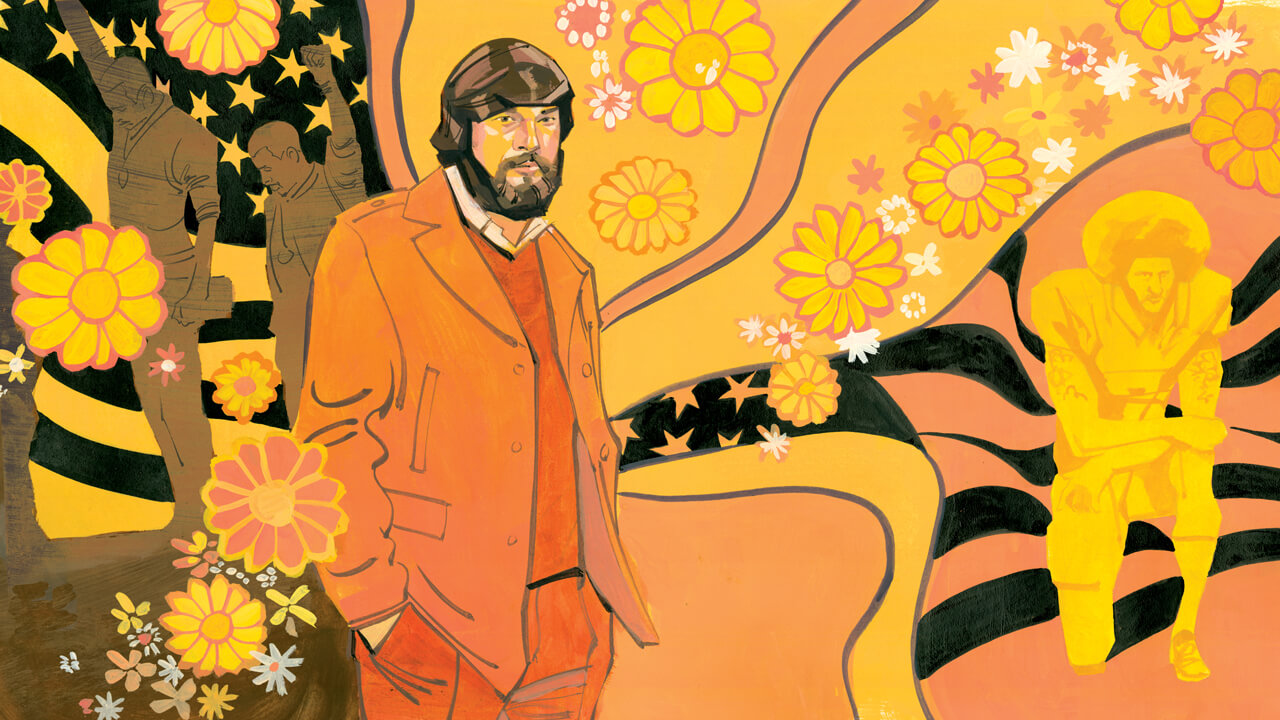Allan Walsh has never been one to go quietly.
It’s in fact his inclination to do the opposite that’s made his name in the game. While others boast client lists with brighter stars and higher dollars, Walsh has risen to become one of hockey’s best-known agents through his unabashed loyalty to his players — and his willingness to wear that loyalty on his sleeve publicly when he feels injustice is afoot, at times becoming a newsmaker in his own right.
But back before he first went to the negotiating table for NHLers, back before he was making waves on Twitter as the sport’s loudest voice on labour issues, Walsh was a young prosecutor in L.A., thrown into the fire navigating murder cases and wondering how his dream of working in hockey had taken such a sharp left turn.
This is how the most outspoken player agent in the game found his way back to the sport he’s long worshipped, in his own words.
Let’s go back to the beginning, before you became an agent — what was your relationship with hockey growing up?
I was born and raised in Montreal and started playing hockey when I was five [or] six years old. I was a goalie. I played throughout minor hockey, played for Dawson College, and played for a little while when I went to McGill University. After McGill, I went to law school in Los Angeles, so I moved from Montreal to L.A.
I went to law school with the idea that I would work somehow in hockey. When I was a kid, I didn’t just play hockey — I wasn’t just a goalie — I was hockey-obsessed. At eight, nine, 10 years old, I was a hockey encyclopedia. My dad had a great influence on me growing up. He would go on business trips, and on every trip he would go into a bookstore and buy a hockey book, and every time he came back, he’d always have one for me. I would literally race to the door, grab the book, go into my room and I wouldn’t come out until I had read the entire thing. So, I was reading about the Montreal Canadiens teams in the 1950s, and about the evolution of the game in the ’60s. Jacques Plante wrote a book on goaltending back in the ’70s that was a bible for a lot of goalies. Ken Dryden wrote a book about the ’72 Summit Series. To this day, I still have every one of those books that he bought me as a kid. I was just absolutely hockey-obsessed, and I went through my entire life like that.
But I get to law school — and I’m going to law school to somehow work in the hockey world — and then I took this left turn and worked as a prosecutor.
So, you start out in this completely different world from the one you’d imagined for yourself. Tell me about the work you were doing back then and how it shaped you as a person and an agent.
You know, you’ve got to put the timing into perspective: I graduated from law school in 1990 and started working for the D.A.’s office, and at the time there was an out-of-control gang problem in southern California. The LAPD and Sheriff’s Department were very focused on dealing with gang crime. The L.A. D.A.’s office had created the Hardcore Gang Division to specifically have a unit of prosecutors expert at prosecuting gang-murder cases. I was 25 years old. The D.A.’s office was understaffed, undermanned, and it gave an opportunity for someone like me — with one year’s experience as a lawyer — to go into court and prosecute murder cases.
At the time, I was the youngest prosecutor in the history of the state of California to prosecute a murder case. And you’ve got to also take this into account — there was nobody helping me. It’s not like a civil litigation, where there are six lawyers that go in on each side and sit down. They basically handed me a file and said, “This case is going to be tried. The jury selection is next week. Make contact with the detectives, make contact with your witnesses, get the case ready and go try it.” And that’s basically what it was. I mean, I tried these cases by the seat of my pants with my hair on fire.
I was running around with detectives the night before trial looking for and subpoenaing witnesses. Literally, you started every case with a slate of names. We had to get them into court, arrange what order to call the witnesses, do my own opening statements, prepare for direct examination, cross-examination and closing arguments. And many times while a jury was deliberating on a murder case, I was already starting jury selection on the next case.
It was a lot of responsibility. I did it for five and a half years. I loved that work, but I also remember very well the advice of a judge who was legendary in the Criminal Courts Building in L.A. — he was the judge that I tried my first case in front of. He said to me once, “Hey kid, a trial lawyer has only so many trials in them. And at the pace you’re going, you’re going to be burnt out at a very young age.”
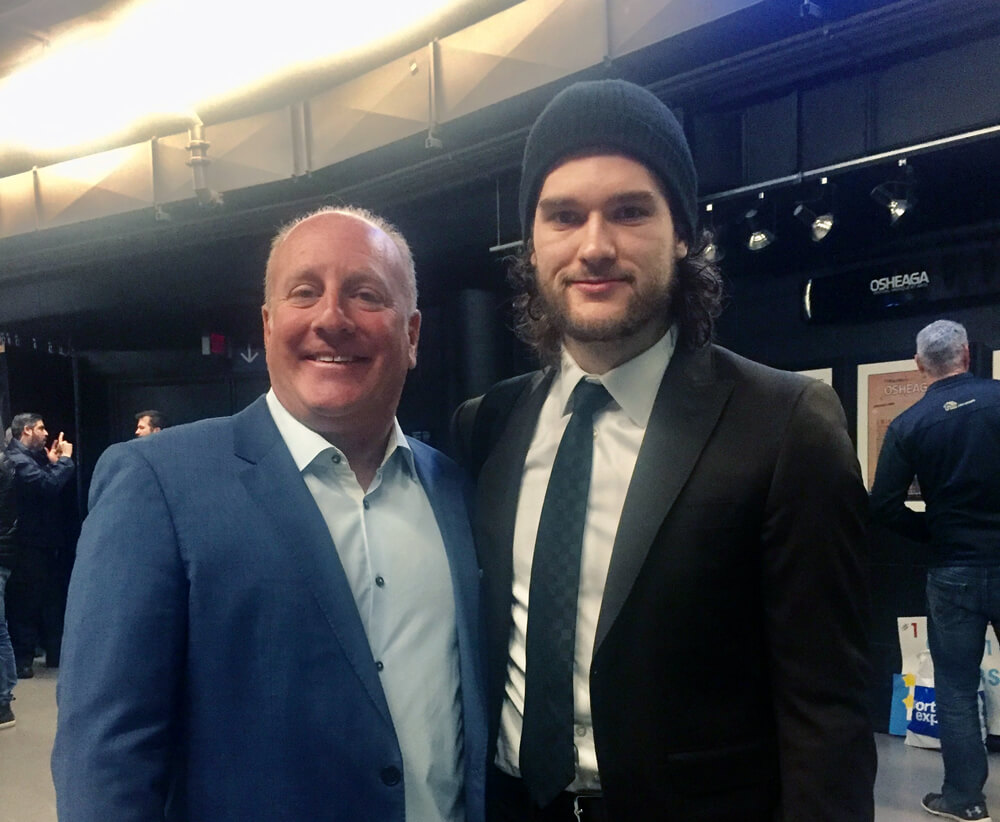
How do you think those experiences influenced what you’re doing now?
When I was trying cases, I identified greatly with the victims of crime. In many ways, victims of crime don’t have a voice in the judicial system. I’m not in any way equating [them] to professional athletes, but victims are very much underdogs within the system, and when I started working as an agent representing players, you know, players were very much underdogs within the system in the sense that they didn’t have a lot of power.
I started in 1995, just coming out of the ’94–95 lockout, and player salaries were really just beginning to take hold. I think my first year in the business, the average NHL salary was approximately $400,000 a year. It was a time where players still never dreamed they would make enough money as a player to not have to work after their career was over if they didn’t want to. It was a time where there certainly were the makings of a power shift going on within the system. But it was just beginning.
And I very much identified with players. At the time, there were limited rights to second opinions [on medical issues] — lots of players were playing through injuries, some serious. Many players played through head injuries. There was always the threat of getting sent to the minors. There were very few irreplaceable players. The general managers and owners had a lot of power, and the Players’ Association — coming out of the ’95 lockout — had just withstood an attack to implement a salary-cap system, and were able to come out of that lockout in January ’95 without a cap. Free agency in ’95 — unrestricted free agency was age 32, and didn’t go down to age 31 until 1999. So, players were very much still tied to their teams, and the teams had a lot of control over them, really through the prime of players’ careers.
I always saw myself as a players’ advocate. I always saw myself as being somebody wanting to stand up for the little guy. And many people may not understand what I’m saying when I say that because they look at players right now and some of their salaries, some of their profiles within the business — we’ve come a long, long way since 1995. But really that was my outlook when I started.
What do you remember about your earliest days as an agent, and the difficulty of that transition?
I really didn’t find the transition difficult. From the first day, I absolutely loved it. What happened was I was back in Montreal — I was still a D.A., and trying cases back to back. I had so much overtime built up and they actually mandated that when you get to a certain number of hours of overtime, you have to take it. So, for about the last six months I was a D.A., in between trying cases, I was basically ordered not to come into the office, to take two weeks off. So, I would try a case, get a verdict, and I’d fly back to Montreal and spend the time with my dad. It was on one of those trips that I met a journalist who was very involved in sports. He said, “What are you going to do for the rest of your life? Are you going to stay a D.A. forever?” I said, “No, actually, I’ve just been having these conversations with my dad — I would love to represent players.” He said, “If you’re interested in doing that, you should contact my pal, David Schatia.” I didn’t know the name, but in the 1970s, David was one of the original agents in hockey — there were only [a handful]. There was Bob Woolf, Alan Eagleson, Norm Caplan, Art Kaminsky and David Schatia. Those were all the agents in hockey. There was no one else.
David started representing NHL players in ’71 and throughout the ’70s had the NHL Rookie of the Year five years in a row. One year at the draft, he represented all the players drafted from one to 10. He represented guys like Denis Potvin and Bryan Trottier — his client list was second to none. And in 1981, his first marriage dissolved and he had a couple of young kids that he got custody of, so [he] got completely out of the business.
I cold-called David in 1995 and left a message at his office. He called me back and he said, “This is David Schatia. You left me a message. How can I help you?” I was like, “Hi, Mr. Schatia, thanks for calling me back. My name’s Allan Walsh. I’m from Montreal. I’m a lawyer. I’ve been in L.A. for the last several years. I’m working as a prosecutor in the L.A. D.A.’s office. I’m very interested in the agent business and this journalist mutual friend suggested I give you a call.” David said, “Be in my office tomorrow. 12:30. You’ve got 20 minutes.” Okay.
I go to David’s office, I get let in. It’s the biggest office I’ve ever seen in my life — you could land an airplane in there. I sit down on the other side of David’s massive desk, and we start talking. He starts telling stories about his time in the business, and it was just an amazing conversation that ended up lasting about three hours. And at the end, David said, “You know something, kid? One of my biggest regrets ever was getting out of the agent business — never should’ve done it. If you’re interested, maybe you and I could do something together.” He says, “I’ve got a lot of former clients who are now general managers, coaches, scouts.” He says, “I’m not going to travel. But if you’re willing to hit the road, I think I can open a lot of doors for you.” And on that basis, we shook hands that day on a 50/50 partnership.
We started from scratch with no players, and through a lot of hard work and a lot of kilometres in cars [and] in the air, we built an agency together. We began hiring people to work with us. And from ’95 to about 2004, we built an agency with approximately 35 to 40 players in the NHL. At that time, there was a lot of consolidation going on in the agent business, and there were a lot of bigger agencies looking to acquire mid-sized agencies, which is what we were. Octagon approached us and was interested in acquiring our business. At the same time, it allowed David, who was looking to slow down and ultimately retire, an exit strategy.
We ended up selling our agency to Octagon. I came on board with David — all of our clients came on board — and we merged into the existing hockey division, which was Brian Lawton, Mike Liut and Larry Kelly. David, over the course of the next two years, transitioned into retirement. Brian left to become the GM of the Tampa Bay Lightning and Larry Kelly retired. And Mike Liut and I became the co-managing directors of the hockey division.
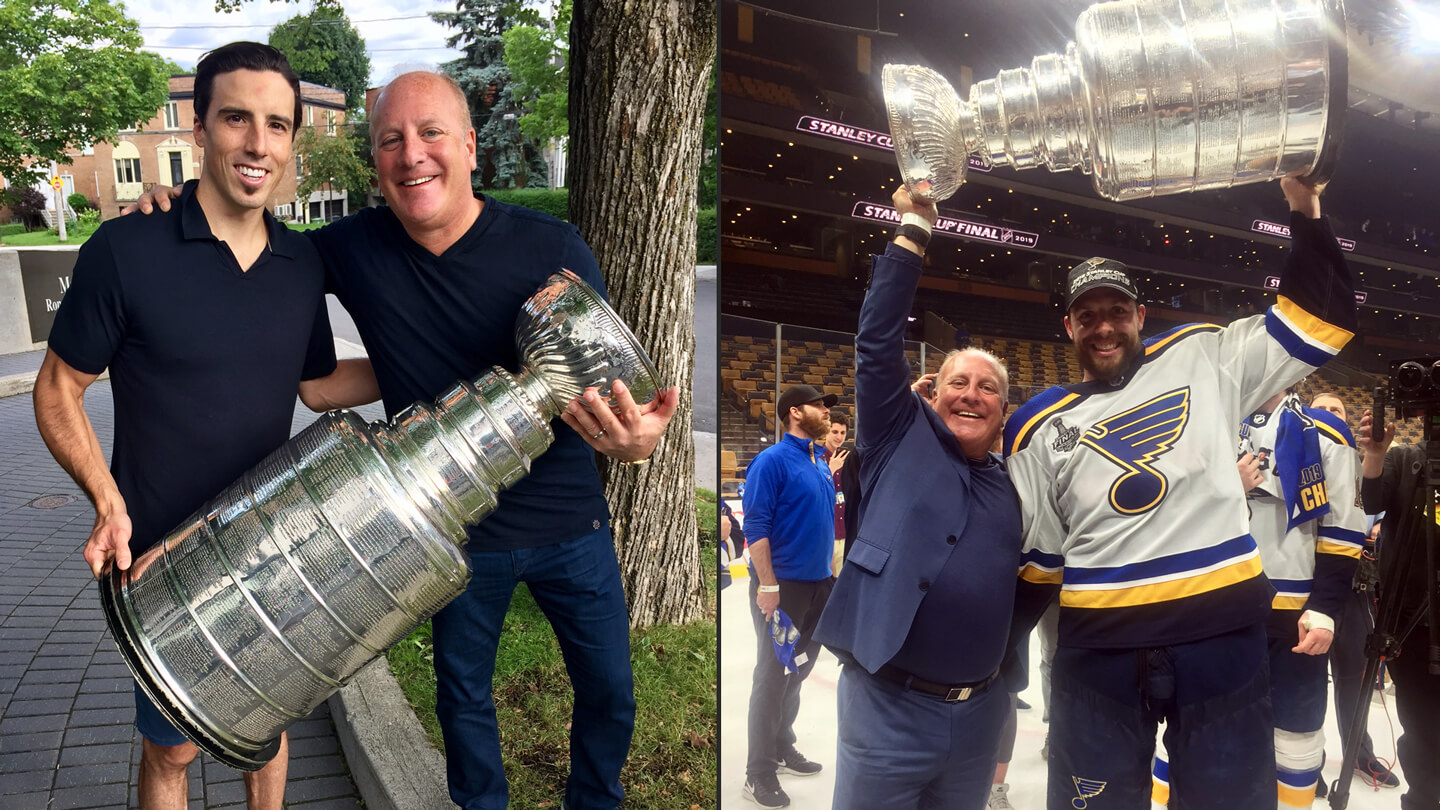
You’ve since become one of the most prominent agents in the game. When did you first start to feel things shift in that direction?
I honestly think why I started getting a profile in the game is that I was willing to stand up and speak for players and willing to do it publicly, if necessary. I never look for a fight, but you look to do what’s best for the players. It may happen once, it may never happen, but there comes a time where a player’s career is on the line. And they need to know, through their darkest days, that their agent is only concerned about their well-being, their success and the viability of the rest of their career. And will do anything. Will take any bullet.
I think there are a lot of agents out there in the past who were unwilling to do that because they didn’t want to rock the boat. If things got to a certain point, they were afraid that maybe teams wouldn’t want to work with them anymore — “How would that impact the rest of my business?”
I went about it and looked at every situation like, “This player, this client, has placed a sacred trust in me.” And if there’s nothing else left to do except fight for this player’s career — if you’ve exhausted every other option, and you have no other options left, and the player is asking you to fight for him, I’m willing to do that. And I think that over the course of years, whether it was Marc-Andre Fleury, who I started representing when he was 15, Martin Havlat, who I started representing at 17, Patrik Elias, who I represented for 15 years, Pascal Dupuis, who I represented for his entire career, you become family. And the level of trust they have in you, and the level of love you have for them, it’s powerful. It’s powerful to have that bond.
And I think it gives players motivation. I honestly believe players have more meaningful careers knowing there’s someone out there who believes in them, who’s thinking about them, who cares about them and is willing to fight for them if it ever came to that. And to me, that’s the essence of what it’s all about to represent a player.
Your willingness to defend your players online, and your Twitter presence in general, seems to be a key reason you’ve become such a well-known figure in the sport.
You know, back in 2008, being part of a large agency, there was a representative from Twitter who came to Octagon to speak to a group of agents about the platform. At the time, there were no smartphones, there was no Twitter app — it was going onto a desktop and typing “Twitter.com” and tweeting from the desktop.
I never in my wildest dreams thought that Twitter and social media would become what it has. But it really was at its nascent state when I started tweeting. I think I had 125 followers.
As Twitter grew, I started sharing my thoughts more. I always saw social media as a way to advocate for clients directly to the media and to the fans. That was my outlook when it started, and as it developed over the years, it became a way to express yourself. That’s really how I see it now. It’s a way to promote, it’s a way to express, and it’s a way to share.
You mentioned the hesitancy of others in the hockey world to speak out. Have you ever felt any pushback from the NHL for anything you’ve said?
The only people I care about are my clients. Everything I do will be in furtherance of my clients’ interest, and I really don’t care what other people think. I mean, I’ve been probably called over the years every name in the book — on social media, off social media. I really don’t care.
I don’t work for them. It’s not my job to please them. The only people I care about are my clients. Period.
How would you characterize your relationship with GMs around the league?
You create a level of trust in your daily interactions. I mean, I will never get off the phone with a GM and tweet anything about a private conversation. I think that’s out of bounds. I think you have an obligation to conduct yourself in a professional way, and I think that’s very important. There are many GMs who follow me on Twitter, and I’m well aware of it. And very often I’ll tweet something — not about them, not about their club, but just something, whether it’s a CBA issue or something to do with player safety or junior hockey. And within 10 seconds, a GM will be texting me, engaging in a discussion about the tweet.
GMs don’t tweet, but they have accounts. They follow various people around the hockey world, and I’m one of the people they follow. And many times there’s a discussion or a dialogue or a back-and-forth about something that I tweet — in a good way. But there are ground rules that I follow. I’m not going to tweet trade rumours. I’m never going to tweet something that a GM said to me in confidence. There’s a level of trust that exists, that, “I can say this on the phone to Allan, and I’m not going to worry about him tweeting about this 10 minutes later.”
I don’t think most people understand the full scope of what an agent does aside from contract negotiations. Take us through a typical day in the life of an NHL agent.
You wear a bunch of different hats. Contract negotiation is probably the most important role you have, but in many ways you’re also an advisor — business advisor, psychologist. Players call you when they’re down. Players call you when they’re scratched. Players call you when they’re not happy with their play. And it’s not like they’re looking for advice on how to play better — that’s not an agent’s role. I can’t tell a player to pass instead of shoot or shoot instead of pass. But you can deal with the psychological impact of maximizing their performance.
I’ll give you an example. I had a player call me who was just really down. Just was not in a good situation with his team, was not being used the way he’d been used previously, was just feeling down. And I said to the player, “Remember when you were 16? Remember how much you loved playing the game? Remember when you were telling me about that time you were 13, 14, playing on an outdoor rink? Remember the joy of playing with the puck? Remember the joy of being out there, the freedom? Why don’t you bring that joy back?” And he said to me, “How do I do that?” And I said, “How about stand there at the pre-game warmup, grab a puck, stickhandle a little bit on your own and just think about being that little boy on the outdoor rink, think about the joy you had. Look around you — you’re in the NHL. There’s going to be a full building tomorrow night. You’re making a living doing this. Think about all that you’ve done and all you’ve accomplished to get to where you are.” He ended up having a string of really good games, and he called me and said, “It was amazing — I did that, and I felt it again.”
That’s the kind of connection you can have with players. You get them sometimes into the right mindset where they can go off and be their best — give them the tools, give them the support, so they can go out and be their best.
When you see one of your players face criticism or scrutiny, what is that experience like for you?
I think you have to look at each situation and assess it. I think you have to have a lot of communication with the player during those times. And I think you have to come up with different options and an actual strategy on how to deal with things that are coming at you. You have to go forward and implement that strategy. I think if you don’t come up with a plan, it’s easy for players to get lost in the weeds.
And I think when a player feels that he has some level of control, and is working with people who believe in him, when they go through their darkest days that’s what helps players make it through to the other side.

